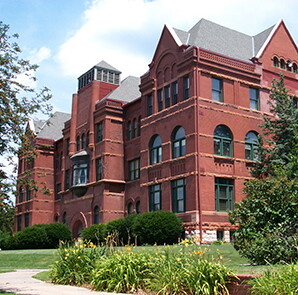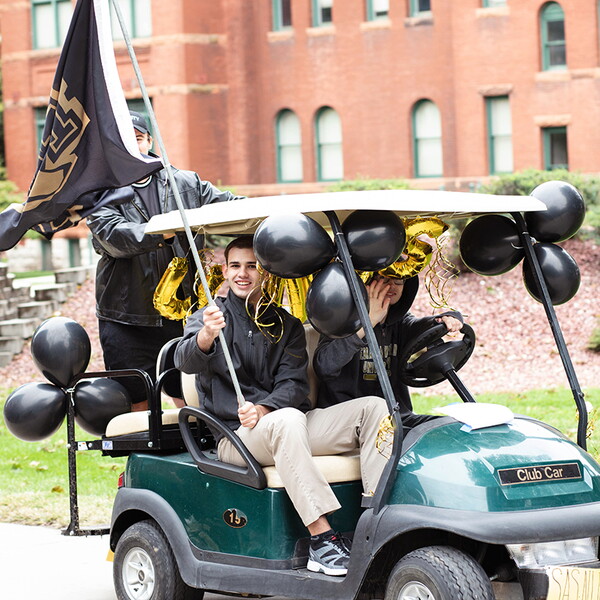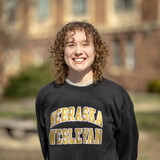The nearly 2,000 hours that students enrolled in the Communication Research Methods class spent on their semester project not only saved their grade, but may potentially save lives too.
“I learned so much from this project about blood donation and what goes behind the scenes in an organization like the Nebraska Community Blood Bank,” said Nebraska Wesleyan University junior Sydnee Hansen. “I think the most important thing that this project taught me was how what we learned can be applied in the field and help save lives.”
Last summer, administrators with the Nebraska Community Blood Bank (NCBB) approached NWU communication studies professor Karla Jensen. They sought her expertise and ideas on how best their organization could gain and retain donors.
Jensen proposed it as a project for her Communication Research Methods class.
And her students were up for the challenge.
For 13 weeks, 13 students poured over the organization’s communication processes. They conducted interviews with NCBB employees, current donors and people who have never donated blood. They conducted focus groups, reviewed marketing materials, followed its social media practices, and studied the use of the NCBB’s call center. They looked at nonverbal cues: the facility’s physical atmosphere, the employees’ body language.
In class students learned about quantitative, qualitative, and rhetorical methods, evaluated research arguments, and completed literature reviews. The skills proved valuable beyond the classroom as they applied their skills to their project.
The students drew many conclusions: the NCBB does many things well, but just like any organization, there is always room for improvement.
On December 17, the students presented their formal recommendations to the NCBB. Among their suggestions: strengthen employee communication, recruitment communication, and the physical environment.
The students agreed that happy employees lead to happy donors so they recommended team bonding with lunches, awards, and more opportunities for staff to connect inside and outside of work.
Their research found that loyal donors are willing to donate regardless of the incentive, but new donors need a push. They recommended buddy programs, date nights or family nights that would bring families and friends together for a good cause and reward them with incentives like movies or dinner.
Their research also demonstrated the importance of a welcoming physical environment. Students were concerned by the facility’s stale atmosphere. The students recommended painting the white walls with warm colors, decorating with signage that thanks donors for saving lives, and providing music for donors to listen to at the donation stations.
“The NCBB saves numerous lives every day, and we were honored to work with an organization that has such a powerful impact in our community,” the class wrote in its final report.
Jensen said NCBB administrators seemed pleased with the results. Jensen was pleased with her students’ work.
“It was a thrill to see my students applying their newfound knowledge and skills in an off-campus setting,” said Jensen. “This experience illustrated the pragmatic nature of communication research.”
For the students, the project gained them skills that reach beyond one organization.
“Working as a team, striving for one goal, and answering questions together as a class will go with me in the future,” said NWU senior Erin Twibell. “It’s very important for any organization or group to find common ground.”
“This project definitely brought those characteristics out in the entire class,” Twibell continued, “enabling us to combine forces and potentially help save lives.”












